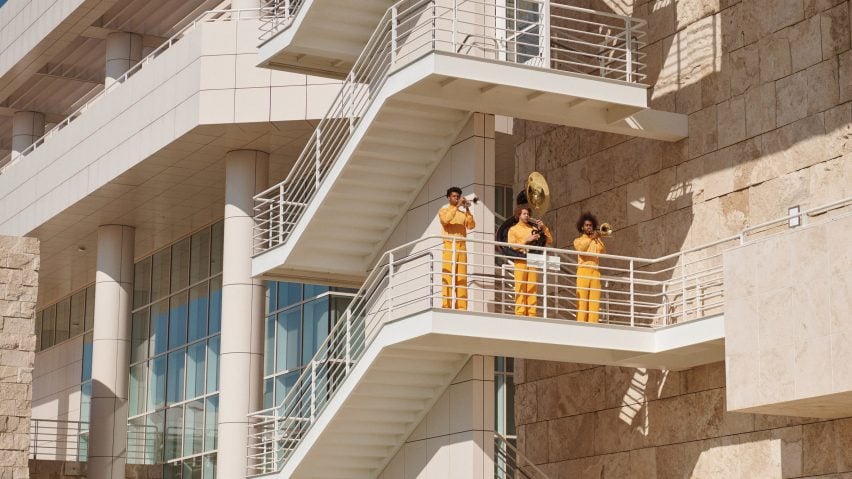
Solange directs Getty Center performance to be "extension of Richard Meier's architecture"
Musician Solange has sent us behind-the-scenes photos of the performance she directed at the Richard Meier-designed Getty Center in Los Angeles. In this interview she tells Dezeen why she's targeted major art museums with her music.
The Grammy Award-winning musician teamed with performance-art company Gerard & Kelly to produce Bridge-s at the Getty Museum campus, which was completed by Pritzker Prize-architect Richard Meier in 1997.
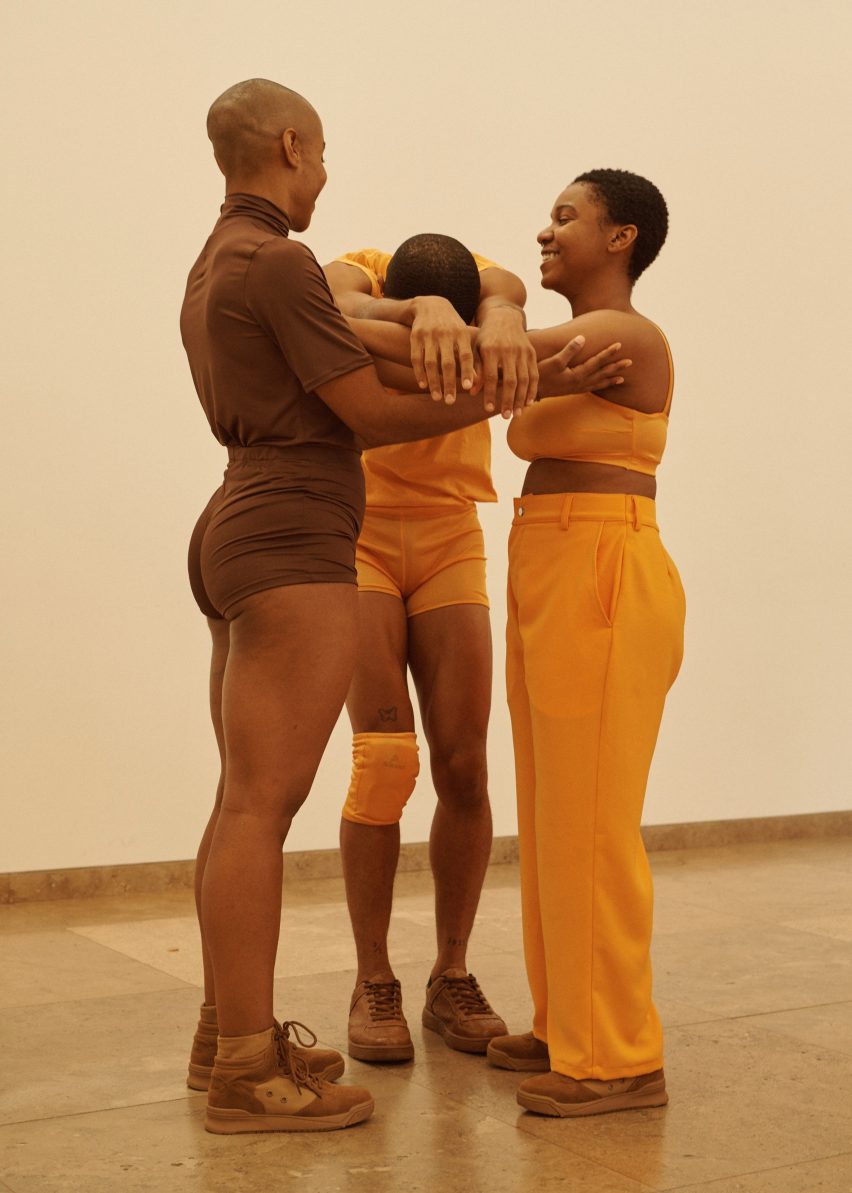
The performance is one of a series Solange has produced at architectural landmarks, including New York's Guggenheim, London's Tate Modern and Hamburg's Elbphilharmonie.
Solange said the Getty Center spectacle earlier this month, which comprised an interpretative dance choreographed to a musical score, was intended to take cues from the building's architecture, and add to the viewer's experience of it.
"The most important thing for me as a director was to create expansiveness in the performance within the architecture; to lean into it as much as possible," Solange told Dezeen.
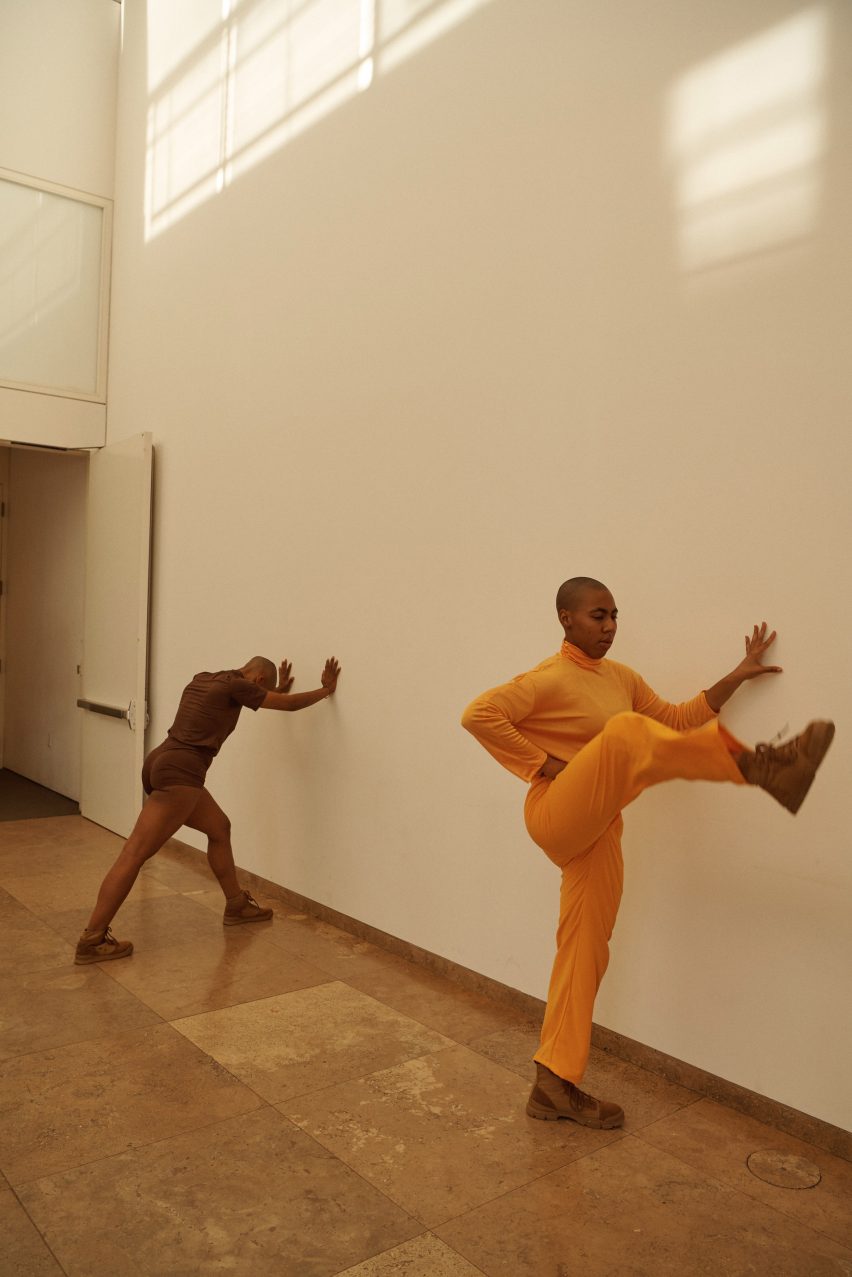
"Gerard & Kelly's work within geometric forms feels very much an extension of Richard Meier's architecture," she continued.
"The idea of interrupting these sort of bleak and rigid responses to modernism and minimalism, into something soulful, intimate and communal, is what I tried to achieve with these arrangements, and what the architecture of The Getty achieves so powerfully."
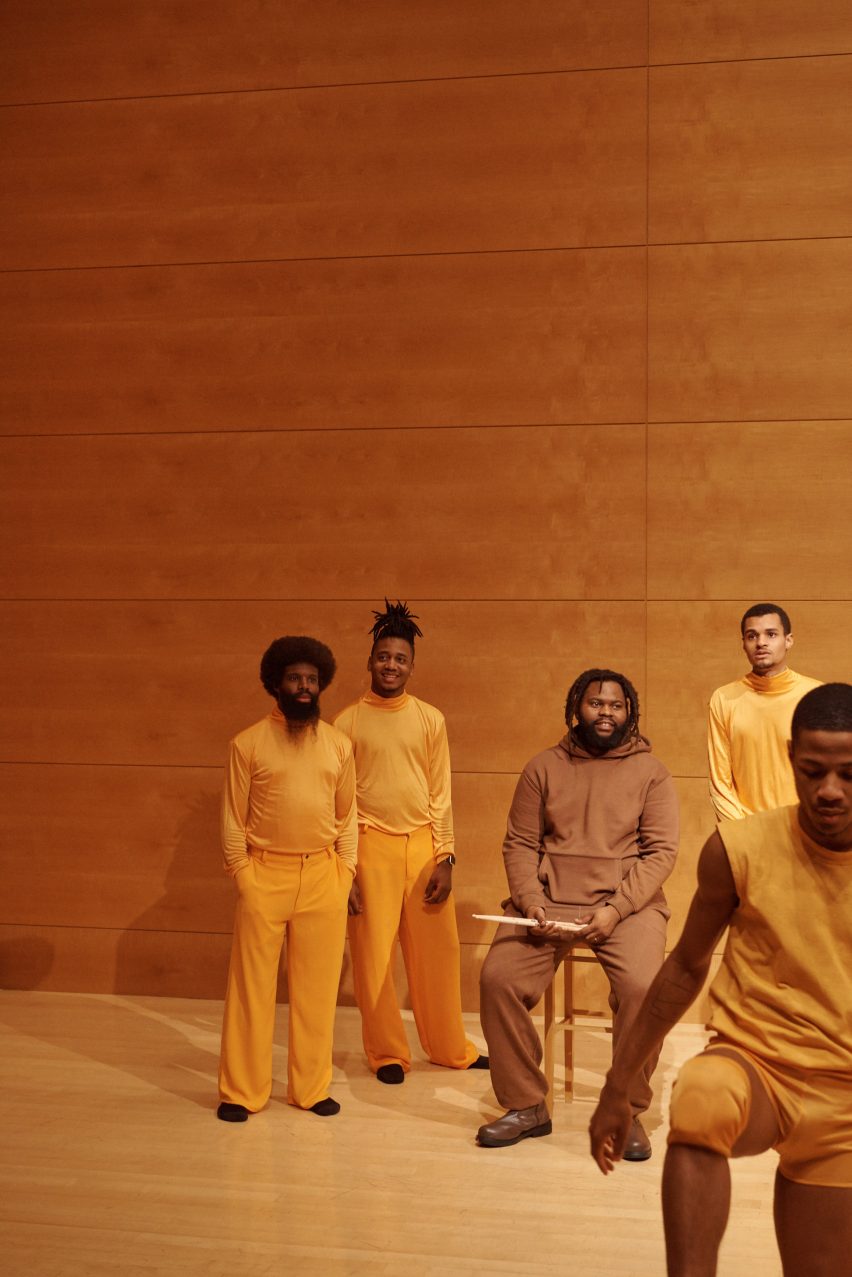
Dancers and musicians were dressed in either monochrome orange or brown outfits, which Solange chose to "speak to the light and the lines and shadows of the architecture".
She directed the dancers to perform in various pockets of the sprawling complex – including the exhibitions pavilion, terrace, gardens and stairways.
"It was important to me to respond to the vastness of The Getty as much as possible, so I really used the arrangements of the ensembles to speak to and explore how sound travels," Solange said.
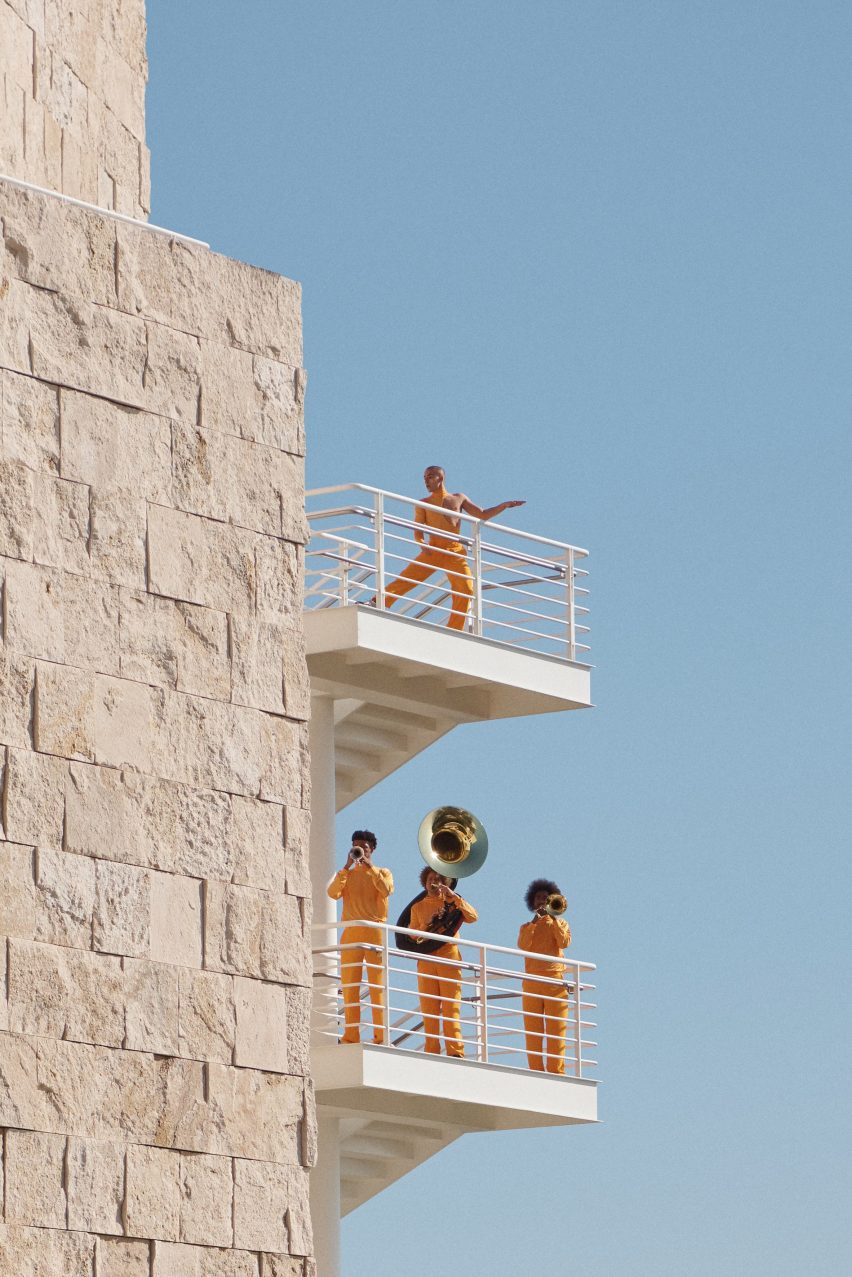
"I broke the brass sections up into three different small ensembles; placing one across the garden, one on the stairs at the Research Institute, and one on the stairs at the West Pavilion, syncing the compositions with the drummer on the lawn."
Born Solange Piaget Knowles, the 33-year-old musician has taken to creating visual-art events at architecturally important buildings in recent years – this year, she also took over Herzog & de Meuron's Elbphilharmonie Hamburg concert hall in Germany.
Solange has particularly targeted art museums, such as the Frank Lloyd Wright-designed Guggenheim Museum in New York City and Donald Judd's Chinati Foundation in Marfa, Texas.
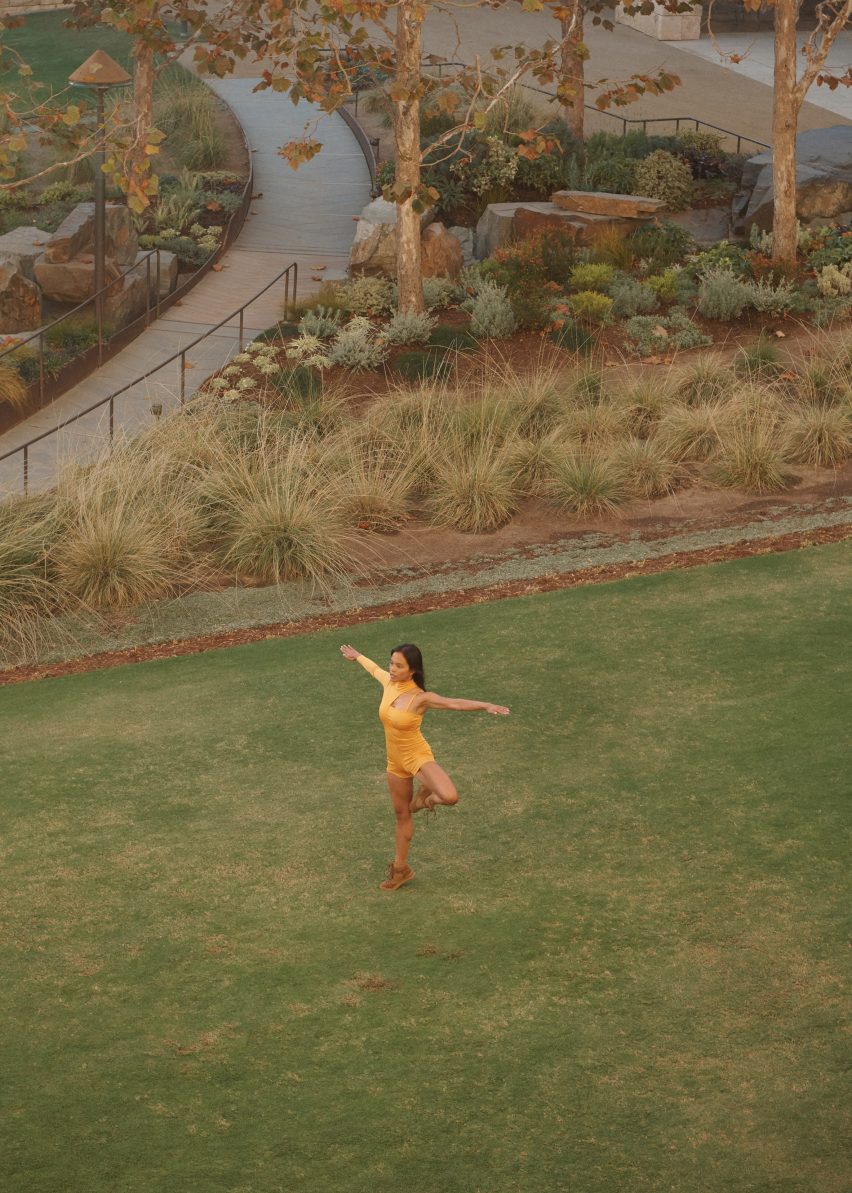
The events, she argues, could help disseminate the work of these institutions to a wider audience.
"Over the last few years so much of my work has become about world-making; creating landscapes and universes that I wanted to see growing up and leaving them behind for girls and women who look like me to discover," she said.
"The purpose for me is to create sound and movement and scenography to develop my own architectural language and to invite the right spaces to coexist with the work."
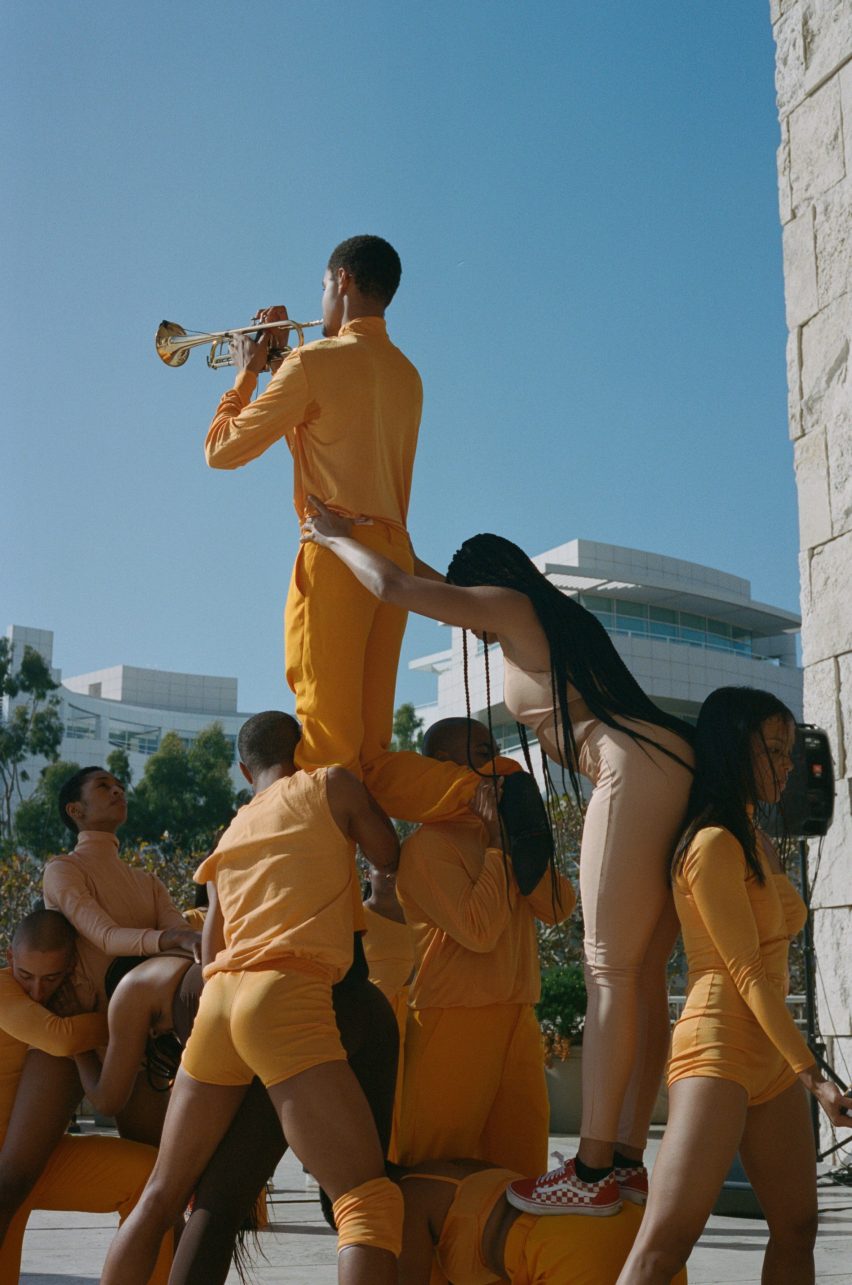
The two-day event Bridge-s also included films and artist talks curated by the musician, which were all free and open to the public. The event was by Dropbox and Getty in partnership with record label I Am Sound.
The partner company for the event, Gerard & Kelly, has similarly created a host of architecture-related performances, as part of a greater trend for the expression.
The duo's main project is the Modern Living series, which has seen them create dances that interpret important modernist works, such as Le Corbusier's Villa Savoye, Mies van der Rohe's Farnsworth House, the Schindler House by Rudolph Schindler and the Glass House by Philip Johnson.
Read on for our interview with Solange:
Eleanor Gibson: Firstly, can you tell me about the Bridge-s series?
Solange Knowles: I wanted to create a space that spoke through a very personal response to the urgency of transition. The curation is a reflection on how much space can be controlled and accelerated by our own ideas, thoughts and movements.
I wanted to create programming throughout the weekend that invited people into these intimate revelations with artists, filmmakers and philosophers, who I admire and love, that speak the same language.
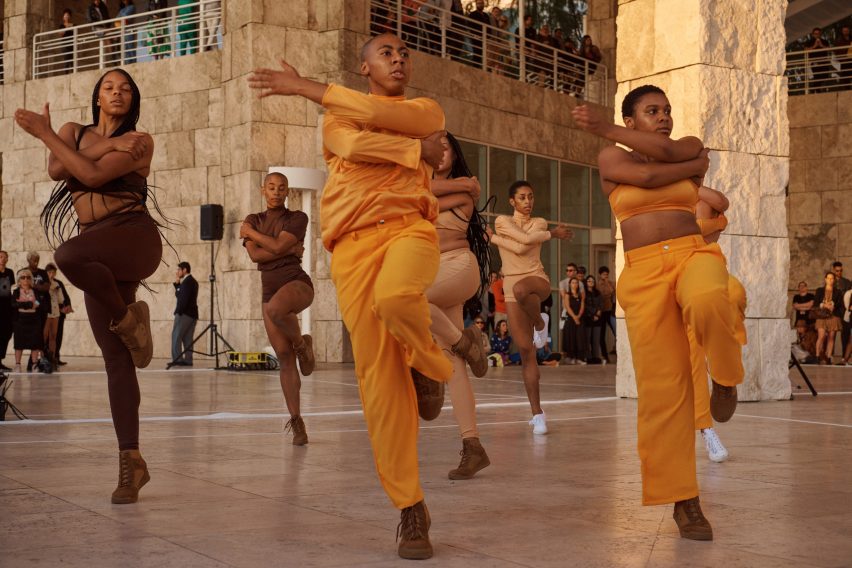
Working alongside Gerard & Kelly to co-direct and score their Modern Living piece felt like a very natural response and a direct way to demonstrate these conversations because both of our work is already centered around time.
Many of the gestures in the movement revolve around a "clock" structure. Many of my compositions are based on creating a timeline through both repetition and extreme interruption of repetition.
I wanted to create programming that invited people into these intimate revelations with artists, filmmakers and philosophers
Film works involved in the weekend programming like Julie Dash's Diary of an African Nun or Afronauts by Frances Bodomo tell the stories of these women's transformations from two very distinctively different lenses.
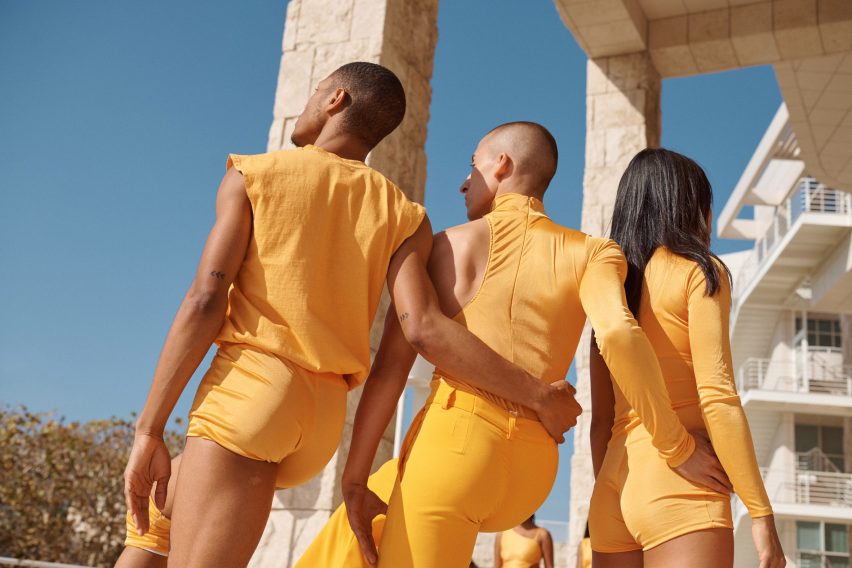
Jenn Nkiru's Black to Techno speaks to the transition of the origin of techno music from black people in Detroit to this global expression in Germany. Kodwo's lecture on Afro-futurism and its transition through the diaspora. All of these experiences really worked together to have the larger conversations with Modern Living, acting as the house that lives and breathes these beliefs in real time.
Eleanor Gibson: How does the performance respond to the architecture?
Solange Knowles: Gerard & Kelly's work within geometric forms feels very much an extension of Richard Meier's architecture. The idea of interrupting these sort of bleak and rigid responses to modernism and minimalism, into something soulful, intimate and communal, is what I tried to achieve with these arrangements, and what the architecture of The Getty achieves so powerfully.
It was important to me to respond to the vastness of The Getty as much as possible
The most important thing for me as a director was to create expansiveness in the performance within the architecture; to lean into it as much as possible. I broke the brass sections up into three different small ensembles; placing one across the garden, one on the stairs at the Research Institute, and one on the stairs at the West Pavilion, syncing the compositions with the drummer on the lawn.
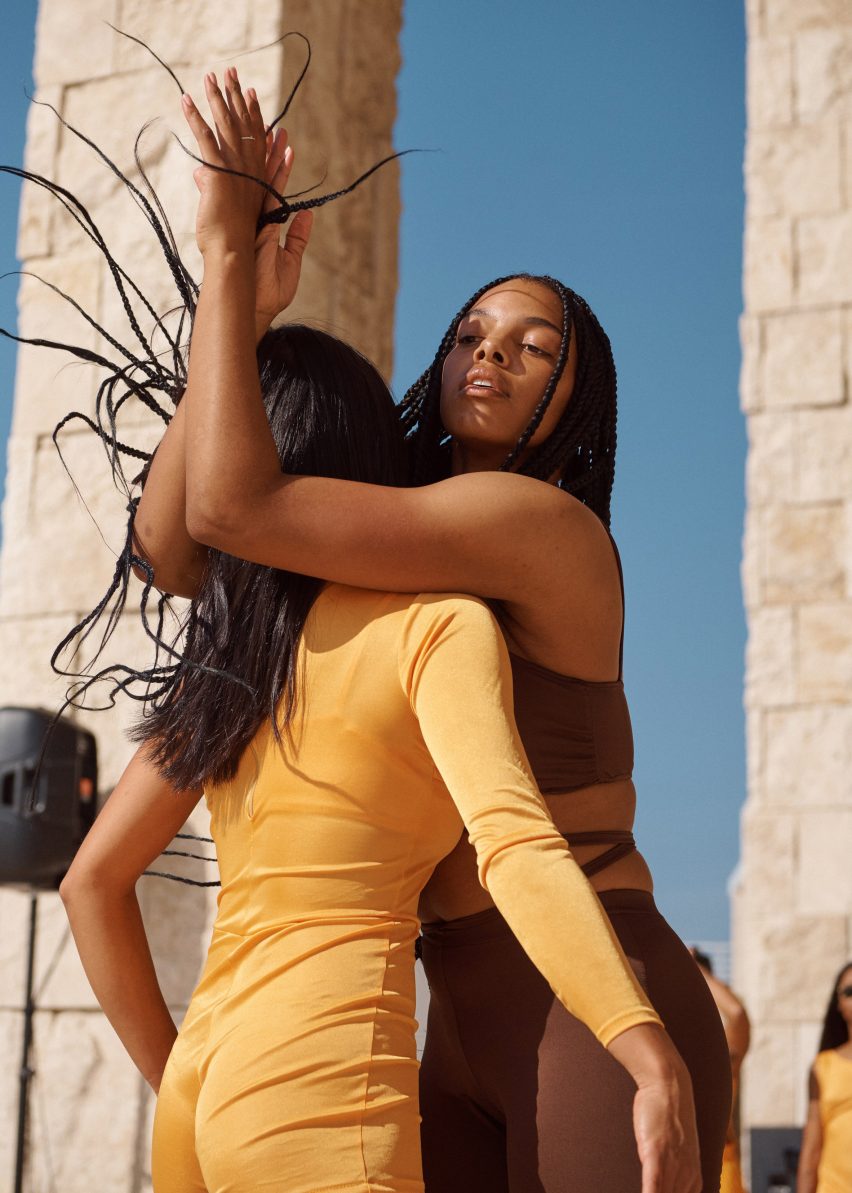
It was important to me to respond to the vastness of The Getty as much as possible, so I really used the arrangements of the ensembles to speak to and explore how sound travels.
I also wanted to create work that responded to the light. The costumes speak to the light and the lines and shadows of the architecture.
Eleanor Gibson: It follows a number of other performances at museums, such as Tate Modern and Guggenheim. Why are you holding events in these architectural landmarks?
Solange Knowles: Over the last few years so much of my work has become about world-making; creating landscapes and universes that I wanted to see growing up and leaving them behind for girls and women who look like me to discover.
I started touring at 13 and that sense of longing for home and control has really been a theme in much of my work as well.
The purpose for me is to create sound and movement and scenography to develop my own architectural language
Being on the road and moving through hotels and airports and venues at such a young age, architecture really became a way for me to express and imagine my future. The type of woman I'd want to be, spaces I'd want to dwell in, the things I'd want to say and worlds I want to create.
The purpose for me is to create sound and movement and scenography to develop my own architectural language and to invite the right spaces to coexist with the work.
Photography is by Daria Kobayashi Ritch, copyright Saint Heron.